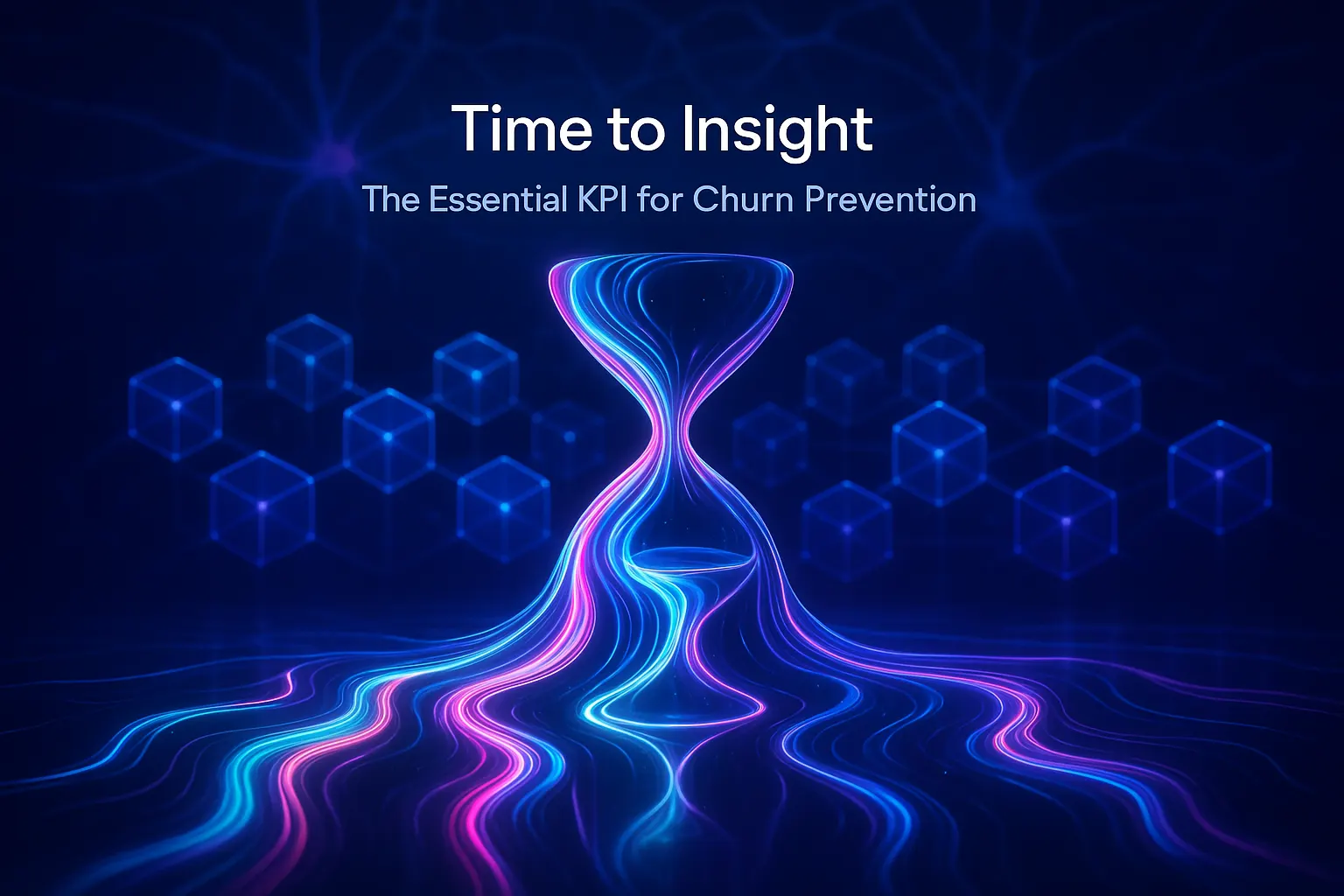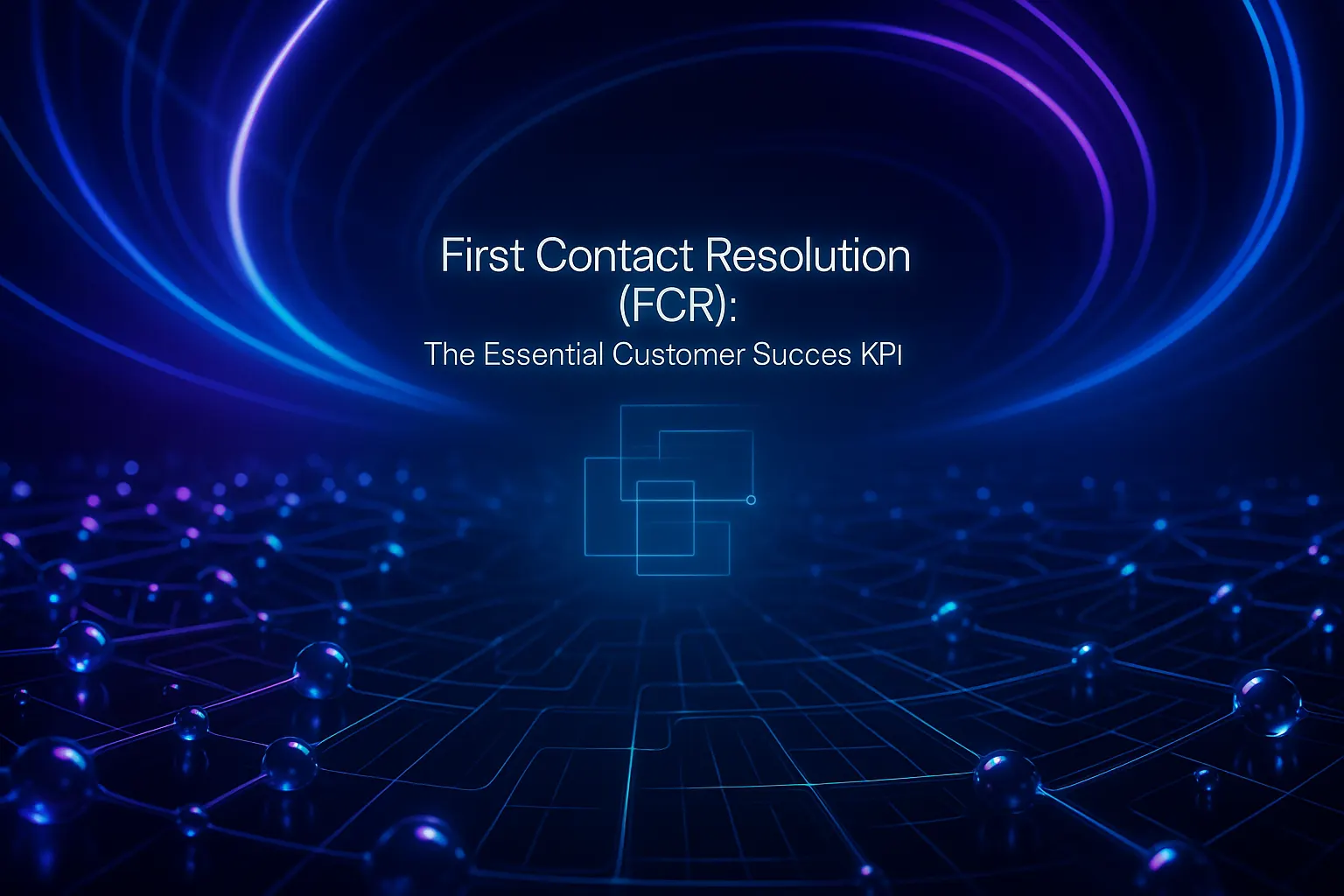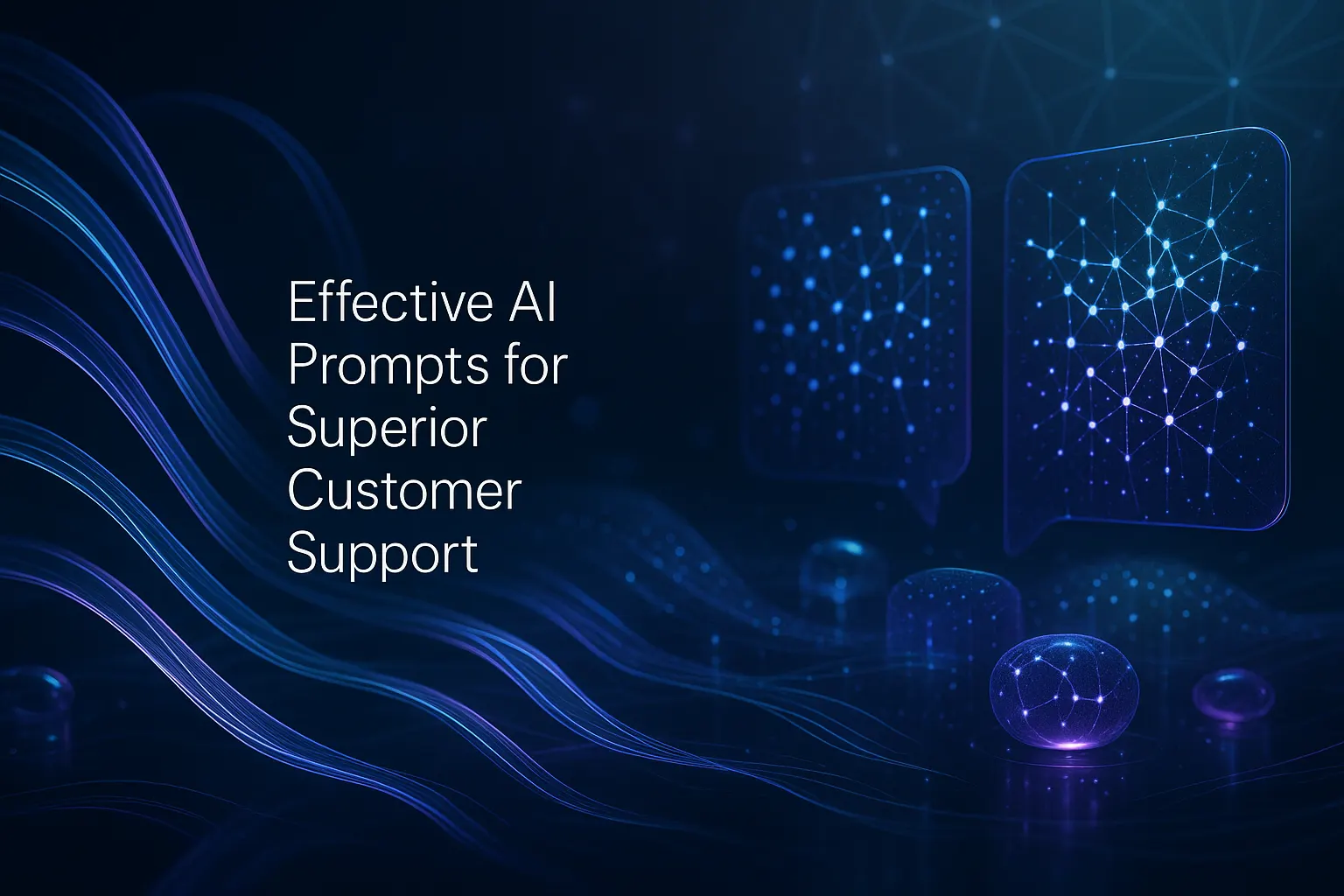Your churn battle hinges on one clock
You can sense churn risks long before the cancellation email lands. Signals emerge, patterns develop, and risk intensifies. What truly determines the outcome is your team’s speed in recognizing these signals and turning them into decisive action. This critical measure is called Time to Insight.
Teams that detect risk early act proactively and calmly. Teams that notice danger late are forced to scramble. The difference is evident in renewals, expansions, and customer advocacy.
Churn rarely surprises companies that consistently and rigorously measure their speed of insight.
What Time to Insight really means
Time to Insight (TTI) measures the delay starting from the moment a churn signal is recognized to the point where an actionable decision is made. Consider it with this simple formula:
TTI = Decision timestamp – Signal recognition timestamp
It’s crucial to clearly define what constitutes a signal: examples include a sudden drop in feature usage, a critical support ticket, a billing issue, or a stalled onboarding task. Define the decision just as specifically, such as launching a save playbook, offering a customer success call, or proposing a new plan.
A shorter TTI means your outreach reaches customers while their frustration is still recoverable. Not every case can be resolved, but you boost your odds by engaging before customers disengage for good.
Vanity metrics will not save renewals
If your focus is limited to reply speed, you’re missing the point. Metrics like First Response Time measure how quickly you reply, and Time to Resolution tells you how soon you close an issue. Neither reveals the all-important moment your team recognized the risk of churn.
CSAT and NPS have their uses, but they lag behind actual events and often arrive too late. TTI works further upstream. It measures the instant your team discerns a true risk and commits to a course of action, where churn prevention really begins.
If you want more detail on how early retention action can be bolstered with technology, learn how AI helps retain customers before they leave. This resource provides insight into techniques that can reinforce and elevate a TTI-based approach.
Measure TTI across every channel you run
1) Define your churn signals
- Product: usage drops, failed events, seat reduction, feature abandonment.
- Support: repeated complaints, refund requests, escalations, unresolved tickets.
- Commercial: overdue invoices, discount demands, procurement freezes.
- Success: missed onboarding milestones, quiet accounts, stalled QBRs.
2) Unify identities
Map users and accounts across your product, CRM, and helpdesk systems. Unify these under a common account key. This step is essential for building a coherent, auditable timeline.
3) Stamp the decision moment
Create a clear decision event, marking the moment when action is taken in direct response to a churn signal. Examples in your system might include save_playbook_started, which signals a customer retention plan has begun; escalated_to_success, indicating escalation due to churn risk; or plan_adjustment_offered, denoting when a new pricing or plan is proposed to keep the customer.
4) Instrument the pipeline
- Send signal events to your data warehouse.
- Link these events with recorded decision events.
- Compute TTI for each signal category, for every account, and by segment.
- Visualize the distribution, not just the median.
Track both mean TTI and P90 TTI. Cases with prolonged TTI often hide significant revenue risks.
Set targets by lifecycle stage
One TTI target will not fit every customer or segment. Context is key.
During onboarding
- Treat key milestones not being met, such as a user’s failure to activate a feature, as a top signal.
- Set an especially tight TTI goal, typically within hours.
- Quickly trigger guided sessions or in-app nudges.
During adoption
- Monitor gaps in feature adoption and signs of role churn.
- Use different TTI ranges depending on the criticality of each feature.
- Pair outreach with targeted templates and a logical next step.
During renewal
- Identify early signals such as discount requests or key stakeholder departures.
- Set shorter TTI for any issues related to budget or perceived value.
- Foster collaboration between customer success and sales teams for a unified recovery plan.
Shorten TTI with workflow, not only dashboards
Dashboards raise awareness. Workflows propel action. You need both.
Operational tactics that cut TTI
- Automatically tag churn signals with a consistent taxonomy.
- Summarize conversations or threads for rapid comprehension.
- Route tickets by intent and account value.
- Offer suggested replies that reflect your brand’s tone and voice.
- Provide relevant knowledge to agents as they type.
- Escalate flagged accounts when multiple signals accumulate.
Typewise supports these practices, integrating seamlessly into your CRM, email, and chat environments. It refines grammar and writing style, offers phrasing suggestions in line with your brand, and keeps response times quick while upholding quality and privacy.
A pragmatic TTI playbook
- Identify three churn signals most critical for this quarter.
- Define corresponding decision events for each signal.
- Set up instant alerts for each signal in your frontline channel.
- Template both the first action and subsequent step to follow up.
- At week’s end, review tickets with the highest TTI.
- Address one root cause per week, and repeat.
Assign clear owners for each step. Measure TTI and your save rate improvement over time. Share success stories with your team, momentum grows as progress becomes visible.
Tooling landscape you can trust today
Starting with TTI measurement doesn’t require a system overhaul. A variety of platforms can help advance your TTI objectives.
- Intercom: Excellent for in-product messaging and modern help centers; ideal for well-timed lifecycle nudges.
- Typewise: Writing assistance embedded in your current stack, reliable tone control, and routing suggestions, great for frontline decision-making.
- Zendesk: A robust ticketing solution, complete with intent routing and macros for repeatable actions.
- Salesforce Service: Rich CRM context, particularly beneficial when account insights inform decisions.
- Freshdesk: Easy-to-use setup for smaller teams and clear SLAs.
- Forethought and Lang.ai: Specialize in classification and providing proposed actions.
- Ada and Ultimate: Strong for automated deflection flows that minimize noise.
Choose your tools based on where your signals originate and where decisions are made. For many teams, crucial decisions happen inside ticketing and email workflows. In those cases, embedded writing assistance and intent cues can lower TTI without major changes.
Dashboards that drive action
Display TTI data by segment, by signal type, and by channel. Separate self-serve customers from enterprise accounts. Show a weekly trend and a P90 target line, keep visuals clear and straightforward.
Add a table highlighting your five slowest insights of the week, including the owner, root cause, and fix. Review this with your team weekly; ten minutes is usually enough.
Share a monthly analysis story: explain what accelerated insights and what slowed them down. Tell your team which change you’ll prioritize next month.
Governance, privacy, and trust
Retention work often involves sensitive customer data. Restrict access to what each team truly needs. Anonymize data wherever possible, and maintain well-documented signal definitions and approval processes.
Typewise keeps data privacy at the forefront, operating inside your environment and adhering to enterprise privacy standards. This is especially important for teams implementing writing assistance within regulated workflows.
Common pitfalls to avoid
- Collecting more signals than your team can promptly act on.
- Mistaking replies for actionable, decisive responses.
- Allowing alerts to flood Slack or similar channels with excess noise.
- Focusing only on the mean TTI, while prolonged outliers (P90) worsen.
- Skipping postmortems on failed save attempts.
Stay disciplined. Teams build trust in TTI when the metric leads to decisive actions and a reduction in churn surprises.
From concept to churn wins
Begin with one journey and a single segment. Identify the key signal, define the decision event, and assign clear ownership. Use writing assistance and intent tagging to trim precious minutes from daily workflows.
As your TTI drops, feed those insights back into your product and success teams. Remove friction, streamline onboarding, and adjust policies or pricing where necessary. The improvements are compounding.
Take the next step
If you want to accelerate and clarify decision-making within your current tools, we’re here to help. Discover how Typewise enables impactful writing, unified tone, and fast, accurate routing, without heavy implementation. Reach out at typewise.app. Together, we’ll help you cut Time to Insight with a thoughtful, practical rollout.
FAQ
What is Time to Insight (TTI) and why does it matter?
Time to Insight (TTI) measures how swiftly a company can act on risk signals before customers churn. It's crucial because fast insight leads to proactive strategies, reducing churn surprises and informing timely decisions.
Why is it important to set TTI targets by lifecycle stage?
Different lifecycle stages pose varying churn risks; hence, tailored TTI targets ensure precise and timely interventions. Ignoring context-specific targets can lead to reactive measures, missing opportunities for preemptive action.
How can workflows help reduce TTI?
Dashboards offer visibility, but workflows initiate action, essential for cutting TTI. Relying solely on dashboards can stall decision-making; integrating workflows ensures immediate and coordinated responses to churn threats.
What pitfalls should be avoided when measuring TTI?
Overloading teams with excessive signals or treating replies as decisive actions can undermine TTI's effectiveness. Focus on actionable insights and refine processes to avoid noise that hinders timely decision-making.
How do integrated tools impact TTI measurement?
Tools like CRM and helpdesk systems can streamline TTI measurement by linking risk signals to decisions. However, they should enhance team responsiveness, not just act as passive data collectors, to truly optimize TTI.






